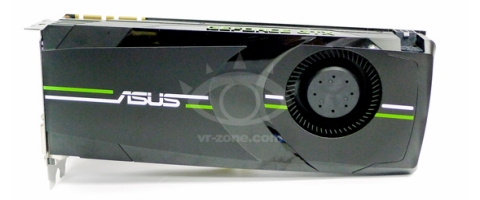Nvidia's Keplar GeForce GTX 680 2GB Overview, 7970 Comparison

You know the Nvidia card that ran the Unreal Engine 3 Samaritan demo single-handedly? Something that required the power of three GTX 580s? Well, new information has been released to give gamers and enthusiasts alike a good idea of just how much power will be at their finger tips.
Not only did the GeForce GTX 680 (previously codenamed the Keplar) run the Samaritan demo in realtime, but it was also the same power-source for Epic's undisclosed Unreal Engine 4 demo, and demo so powerful that Epic Games' Mark Rein said it made the Samaritan look feeble by comparison.
Well, VR-Zone has an extensive overview of the Keplar, detailing all the ins-and-outs of the card, including important info like how the card comes right out of the box with clock speeds at 1ghz, and 1.5GHz GDDR5 (6GHz) on the memory. Right out of the box. What's more is that this card supports Intel's new Sandy Bridge-E design by utilizing PCIe 3.0 support.
VR Zone continues on to cover how the card manages heat output, using a simple heat-plate, a heat-block vapor chamber and thermal paste. It's a crude looking design underneath the sleek exterior but whatever gets the job done gets the job done.
Beyond going over the specs, a complete spec-by-spec and performance-by-performance comparison is issued over at the site against AMD's beastly top of the line 7970, in over-clocked benchmarking tests. You can check out the results, the games that were used and the settings, by paying a visit to the VR Zone.
CINEMABLEND NEWSLETTER
Your Daily Blend of Entertainment News
Staff Writer at CinemaBlend.
‘It’s Like Dick Van Dyke And David Beckham Had A Baby.’ Adam Levine Debuts New Hair For The Voice Playoffs, But What Color Is That?
NCIS: Origins Ended Season 1 With A Shocking Lala Twist. I Had To Know What It Means For Season 2
NCIS Delivered Its Biggest Shakeup To The LaRoche Storyline Yet, And It Came With Some Surprising Gibbs Throwbacks For McGee










